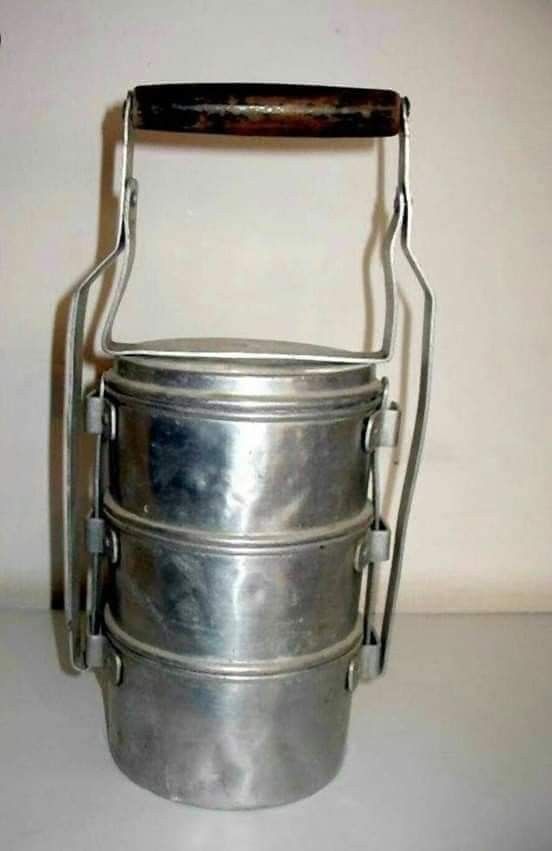Once a simple, practical item for carrying meals, the lunch box has evolved into an iconic symbol of childhood, personal expression, and pop culture. This transformation, from utilitarian metal pails to vibrant pop culture statements, reflects the social and technological changes over the past century. Whether it’s a construction worker’s rugged pail or a kid’s colorful back-to-school essential, the lunch box tells a story. Let’s dive into the fascinating journey of the lunch box and see how it went from a worksite staple to a cultural phenomenon.
The Humble Beginnings of the Lunch Pail

In the 19th century, lunch boxes—or rather, lunch pails—were born out of necessity. Industrial workers needed a sturdy container to protect their midday meals from the rough conditions of factories, coal mines, and quarries. These early lunch carriers were often fashioned from repurposed metal tins or tobacco boxes, giving them a tough, industrial look. These containers were designed to endure harsh environments, keeping food safe and intact.
By the 1880s, children who wanted to imitate their hardworking fathers began using similar metal containers, creating makeshift lunch boxes from empty cookie or tobacco tins. This marked the beginning of the lunch box’s transition from a purely functional item to one that children used to emulate adults and express their budding identities.
The First Commercial Lunch Boxes
The first commercially produced lunch boxes appeared in 1902. These early versions were metal baskets decorated with images of playful children, catering to the growing number of school-aged kids bringing lunches from home. Though simple, they represented the start of the lunch box as a product marketed specifically for children.
In 1935, Mickey Mouse made history by becoming the first licensed character to appear on a lunch box. This was a significant milestone in the lunch box’s evolution, establishing it as not only a functional item but also a canvas for beloved characters and personal expression. Kids could carry a little piece of their favorite stories with them to school each day, sparking conversations and friendships around shared interests.
The Rise of Pop Culture Lunch Boxes in the 1950s
The 1950s marked a turning point in lunch box history. With the rise of television, characters from popular shows and movies became an essential part of everyday life, especially for kids. Aladdin Industries, a Nashville-based company, recognized an opportunity and began producing lunch boxes featuring popular TV icons. They understood that decorating lunch boxes with these characters would encourage kids to trade up each year, even if their current lunch boxes were still in good shape.
The “Hopalong Cassidy” lunch box, released in 1950, was a groundbreaking success. Following this, Aladdin and other manufacturers produced lunch boxes featuring an array of characters—from superheroes like Superman to cowboys like Roy Rogers. Each lunch box became a statement piece, telling the world about its owner’s tastes and personality. The lunch box had officially become more than just a container; it was now a personal billboard that reflected the wearer’s favorite shows, movies, and characters.
Transition to Plastic and the End of Metal Lunch Boxes
By the 1960s, lunch box manufacturing took a brief detour into cheaper vinyl options, but metal lunch boxes quickly regained popularity for their durability. However, the metal era wouldn’t last forever. In the 1980s, manufacturers began switching to molded plastic, which was less expensive to produce and offered greater flexibility in design. Plastic lunch boxes often came with a matching Thermos, giving kids a complete set for carrying both food and drinks.

The shift to plastic marked the end of an era for metal lunch boxes. The rugged metal designs that had served both workers and children so well for decades were gradually phased out. By 1998, Aladdin stopped making lunch boxes entirely, though the Thermos company continued to produce plastic models. The classic metal lunch box has become a rare find, cherished by collectors and fans of vintage memorabilia.
The Lunch Box as a Back-to-School Fashion Statement
While the early lunch pails symbolized durability and practicality, modern lunch boxes became fashion accessories. For kids, choosing the perfect lunch box at the start of the school year was a significant decision. Much like picking out a concert T-shirt in high school, the lunch box conveyed a message. It told classmates, “I’m a fan of Star Wars” or “I love Snoopy.” For many children, it was the most personal and expressive part of their school gear.
As styles changed over the decades, lunch boxes reflected the shifting trends in children’s entertainment and pop culture. In the 1970s and 80s, kids might carry lunch boxes adorned with cartoon characters like Scooby-Doo or the Smurfs. Today, lunch boxes continue to feature characters from the latest movies, video games, and streaming series, showing that the lunch box has remained a timeless means of self-expression.
Collecting Vintage Lunch Boxes: A Piece of Nostalgia

Today, vintage metal lunch boxes are highly collectible items, cherished by those who want to hold onto a piece of their childhood. The Smithsonian’s National Museum of American History even has a collection of iconic lunch boxes on display, preserving this piece of Americana. Collectors seek out rare models from the 1950s and 60s, and prices can climb for well-preserved lunch boxes featuring beloved characters from that era.
Beyond their monetary value, these vintage lunch boxes evoke nostalgia, recalling the excitement of back-to-school shopping and the joy of showing off a favorite character. For many collectors, a lunch box is more than just an object; it’s a memory, a conversation piece, and a symbol of a simpler time.
Conclusion: The Everlasting Appeal of the Lunch Box
From its rugged, practical beginnings to its role as a pop culture icon, the lunch box has undergone a remarkable transformation. Today’s lunch boxes may be different—often insulated, collapsible, and designed to fit inside backpacks—but the spirit remains the same. It’s still a way to carry a little bit of home to school or work, and for children, it’s still a small but significant part of their identity.
In a world that’s constantly changing, the lunch box endures as a symbol of tradition, nostalgia, and personal expression. Whether you’re a collector of vintage models or a parent helping your child pick out a new one, the lunch box continues to tell stories and carry memories with every meal.


